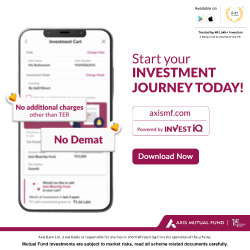India Unveils First Made-in-India Chip at Semicon 2025: A Milestone in Tech Self-Reliance
India’s Semiconductor Vision Becomes RealitySpeaking at the event, Vaishnaw reflected on t
- by Shan 2025-09-03 06:49:03
New Delhi, September 2, 2025 – Marking a historic step in India’s technological journey, Union IT and Electronics Minister Ashwini Vaishnaw on Tuesday presented the country’s first indigenously developed semiconductor chip to Prime Minister Narendra Modi at the inauguration of Semicon India 2025 in New Delhi.
The chip, named Vikram, is a 32-bit microprocessor built by the Semiconductor Laboratory (SCL) of ISRO and is specially designed to operate in the extreme conditions of space launch vehicles. Alongside Vikram, Vaishnaw also presented test chips from four other government-approved semiconductor projects, symbolizing India’s accelerating push to establish itself as a global hub for advanced chip design and manufacturing.
India’s Semiconductor Vision Becomes Reality
Speaking at the event, Vaishnaw reflected on the country’s progress since the India Semiconductor Mission (ISM) was launched in 2021.
“Just a few years ago, we started with the Prime Minister’s vision of building a semiconductor ecosystem. In only three and a half years, the world now looks at India with confidence. Construction of five semiconductor units is advancing rapidly, and today, we proudly present the first ‘Made-in-India’ chip to the Prime Minister,” Vaishnaw said.
Prime Minister Modi inaugurated the event in the presence of Delhi Chief Minister Rekha Gupta and Union Commerce and Industry Minister Jitin Prasada, among other dignitaries.
Strategic Importance of Semiconductors
Semiconductors lie at the core of modern technology, powering critical sectors such as healthcare, transport, telecommunications, defence, and space exploration. For India, developing domestic chip-making capability is not only an economic priority but also a matter of strategic autonomy in an era where technology supply chains are deeply tied to national security.
The government has backed this mission with massive incentives. Out of the ₹76,000 crore Production Linked Incentive (PLI) scheme, nearly ₹65,000 crore has already been committed to semiconductor projects.
Major Milestones Achieved
India’s semiconductor roadmap has seen a series of milestones in recent months:
OSAT Facility in Gujarat: On August 28, India launched one of its first end-to-end Outsourced Semiconductor Assembly and Test (OSAT) pilot facilities in Sanand, Gujarat. Semiconductor company CG-Semi is expected to deliver the first commercial “Made in India” chips from this plant.
Chip Design Boost: Through the Design Linked Incentive (DLI) scheme, the government has sanctioned 23 chip design projects. Startups like Vervesemi Microelectronics are already developing advanced chips for applications in defence, aerospace, electric vehicles, and renewable energy.
Manufacturing Expansion: So far, 10 semiconductor manufacturing projects with a cumulative investment exceeding ₹1.60 lakh crore have been approved across six states—Gujarat, Assam, Uttar Pradesh, Punjab, Odisha, and Andhra Pradesh.
Semicon India 2025: Setting the Global Stage
The three-day Semicon India 2025 conference at Yashobhoomi Convention Centre, Delhi, aims to showcase India’s growing semiconductor ecosystem and its potential to become a global hub for chip innovation and production. This year’s theme emphasizes building a robust, resilient, and sustainable semiconductor supply chain, aligning with global industry shifts towards diversification and security of critical technologies.
Why Vikram Matters
The unveiling of the Vikram processor is more than a symbolic milestone. It signals that India has moved from being largely a consumer of chips to becoming a creator and innovator in a field dominated for decades by a handful of countries. The fact that Vikram is qualified for harsh aerospace applications demonstrates the high reliability and world-class standards Indian engineers are now achieving.
Looking Ahead
With billions of dollars in committed investments, government-backed incentives, and a rapidly expanding base of startups and research institutions, India is positioning itself to play a pivotal role in the global semiconductor supply chain.
The presentation of Vikram to PM Modi is not just the debut of a processor—it is a signal of confidence that India can reduce dependency on foreign chipmakers and lead the next wave of innovation in a sector central to the 21st-century economy
Also Read: Which venture capital firms are the most active in funding Indian startups in 2025

POPULAR POSTS
Top 10 great business ideas for students in India
by B2B Desk, 2024-04-11 12:25:57
Deadline to invest in special FDs, ITR filing, credit cards: Important money changes in August 2023
by B2B Desk, 2023-08-02 08:35:19
Who Are Social Entrepreneurs & Here Are 7 Successful Social Entrepreneurs In India
by B2B Desk, 2023-07-27 07:15:36
From Start-up to Success: The Inspiring Story of Purva Aggarwal
by B2B Desk, 2023-03-15 10:46:08
Go First plans IPO in July as global air travel slowly rebounds
by B2B Desk, 2022-05-19 22:53:37
Highest Paying Jobs in India in 2022
by B2B Desk, 2022-05-10 12:27:48
Higher FD rates and stocks market correction to test retail investors
by B2B Desk, 2022-05-09 22:22:50
RECENTLY PUBLISHED

Loan EMIs to Drop as RBI Slashes Repo Rate - Full MPC December 2025 Highlights
- by Shan, 2025-12-05 11:49:44

The Agentic Revolution: Why Salesforce Is Betting Its Future on AI Agents
- by Shan, 2025-11-05 10:29:23

Pine Labs IPO 2025: Listing Date, Grey Market Premium, and Expert Outlook
- by Shan, 2025-11-05 09:57:07

Top 10 Insurance Companies in India 2026: Life, Health, and General Insurance Leaders Explained
- by Shan, 2025-10-30 10:06:42

OpenAI Offers ChatGPT Go Free in India: What’s Behind This Big AI Giveaway?
- by Shan, 2025-10-28 12:19:11

Best Silver Investment Platforms for 2025: From CFDs to Digital Vaults Explained
- by Shan, 2025-10-23 12:22:46




 Subscribe now
Subscribe now 